Foreword
1997. I retired from the Army, and took up an assignment with Ashok Leyland. I was located at Hosur (TN), which is in effect a suburb of Bangalore. For those who may not know, Hosur was a village with a population of just over 10,000 in 1962. The Tamil Nadu government decided to develop it as an industrial town. It drew technical manpower from Bangalore and very soon several industrial units came up. The population grew at a rapid pace and within 30 years it had increased by a factor of eight. By the time I joined housing colonies were coming up like mushrooms and the real estate business was thriving. However, the town planners had not catered for water. My own establishment had enough area for horticulture and the soil was rich and fertile. For water we had to depend on tankers, but since the quality was poor I had to procure several cases of bottled water from Bangalore for drinking and cooking. Soon I discovered that the money which we were spending on water exceeded our electricity bill, and it became a cause of concern.
When the monsoon set in, we received heavy showers and I saw the rain water creating a nuisance all around. In a casual discussion I heard about ‘rainwater harvesting’, and I liked the idea. Within the next two years we were able to collect this precious liquid and store it in underground tanks. In the meanwhile, reverse osmosis machines were invented, and we were amongst the first customers for the RO plants. Both these initiatives succeeded and we were able to solve the problem to some extent.
Bangalore is now faced with water crisis. The population is bursting at the seamlines. Water has become a political issue and can assume alarming dimensions. My friend, Joseph Thomas who lives in a multi-storey complex has studied this issue in detail. He has come out with a brilliant solution and the results have already begun to show. At my request, he has summarized his experiences in the form of a paper given below. Thomas was a test pilot in the Indian Air Force, but he is an engineer by nature and instinct. Some of you may recall the papers which he wrote to combat floods in the Kashmir Valley. He had suggested dredging of the river, and his recommendations were implemented.
I am sanguine that ‘Rain Water Harvesting’ will also catch on, and the citizens of the “City of Gardens’ will soon have enough water to quench their thirst and give a new lease of life to the parks.
*
Rain Water Harvesting at Jal Vayu Towers, Bangalore
by
Joseph Thomas
Bangalore is situated at an elevation of 3000 feet on the Deccan plateau. Being in the rain shadow area it receives only an average of 905 mm (35.6 in) of rainfall per year. On average there are 108 days per year with more than 0.1 mm (0.004 in) of rainfall. The driest weather is in January when an average of 1 mm (0 in) of rainfall occurs. The wettest weather is in September when an average of 244 mm (9.6 in) of rainfall occurs.
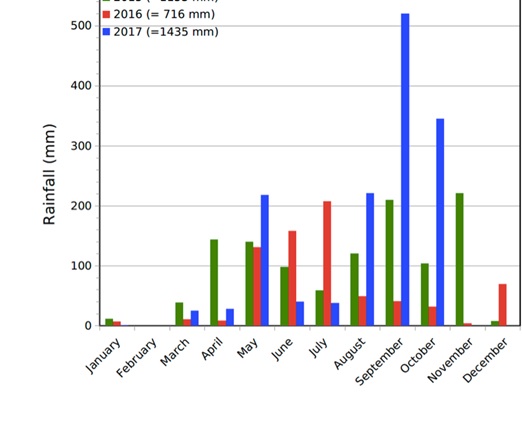 Monthly rainfall patterns in Bengaluru city during January 2015–October 2017
Monthly rainfall patterns in Bengaluru city during January 2015–October 2017
Bangalore does not have any major natural perennial source of surface water. The Arkavathy, a tributary of the Kaveri is the best it has. When the population was small, the water it gave was sufficient for Bangalore. But, increasing population and increasing consumption by farmers has left both its reservoirs — Hessarghatta and Thippagondanahalli — dry almost all the time. Bangalore figures in BBC’s list of 11 major cities that are likely to run out of water.
Pollution in Bangalore’s lakes is rife
The situation is made worse because new housing is going up faster than the city’s water utility can expand and repair the decaying water system. Rain water harvesting (RWH) is, therefore, essential to the survival of Bangalore. It has been made compulsory but the public tries to avoid it.
Jal Vayu Towers is no different. The majority of residents pay lip service to RWH but oppose it in practice. Some even oppose it fiercely. They do not realize that rain water is distilled water and the cleanest source of water available in Nature.
The foundation stone for the project was laid in April 2004. The specifications included rain water harvesting but no details. The architect, project director and contractor were dragging their feet. It took a lot of effort to convince Air Force Naval Housing Board (AFNHB) to implement some measures to gainfully utilize rain water. Very grudgingly, they provided for roof water to be collected and stored in 3 x 20 kL tanks. The plan was for the water to be then pumped into the main drinking water sump.
After the flats were occupied, the residents did not want to drink the rain water. They were partially justified because the outflow from washing machines was being added to the rain water. This could have been rectified but the residents did not want to drink rain water. Period.
In 2008, the next step was taken when Air Mshl N B Amaresh was President. He fully supported RWH. The two leading RWH organizations of Bangalore — Rainwater Club
( http://www.rainwaterclub.org ) and Farmland Rainwater Harvesting Systems ( http://www.rainyfilters.com/) — were invited and both of them did studies. It so happened that they proposed different systems. Rainwater Club proposed charging of rainwater into wells of 30 feet depth. Farmland proposed direct recharging of our bore wells.
Both solutions were expensive and so we thought of creating a shallow depression which would collect rain water and let it soak into the ground. A sunken garden was possible.
However, there was strong opposition to the scheme on the grounds that it was an “eyesore.” When the managing committee changed, there was a move to fill it up altogether. Finally, a compromise was made whereby it was half filled with gravel and sand. It eventually became a Children’s Park. It doubles as a soak pit for rain water but its capacity is far below the requirement. Hence, it overflows even during a moderate rain.
The Children’s Park cum Rain Water Harvesting Pit
By 2009 we had a serious water crisis. The city water supply was disrupted and the three bore wells we inherited from the builder proved insufficient. We were forced to buy 70 tankers of water just in one day.
We engaged a water diviner prior to digging new bore wells. The water diviner found a line of suitable points — children’s park, BB court, main lawn. This meant that there is probably an underground aquifer along that line. When extended, it probably goes to the borewell near Block 3.
The water diviner was exceptionally good. We dug in 3 out of 4 places recommended by him and found water in all 3. The 4th spot is in the main lawn.
The next improvement was to add to the capacity of the AFNHB built underground storage tanks. Two additional tanks of 20 kL were built. Part of the rain falling on the roof of the Community Centre was also captured and sent to one of these tanks.
Certain other measures were taken. Some water from a storm water drain was channeled into a shallow well. From there a 2 inches diameter plastic pipe was located underground to a series of such wells. The small diameter pipe got clogged right in the beginning and the water overflowed into the central storm water drain. When the management changed, it became possible to stop the wastage of water by building a small bund so as to retain the water in the basket ball court and letting it soak. However, subsequently, the plastic pipe was cut and the water let out into the drain. Such are the travails of rain water harvesting. Very few city bred people accept the idea of utilizing rain water. They want rain water to flow into rivers, then dam it and bring it in pipes to their homes.
Further progress became possible in 2016 when Adm T Ganeshan became the president. He was in favour of RWH but some residents strongly opposed it. Fortunately, near the end of his term he bypassed the naysayers and channeled rain water to the central lawn. He also presided over the digging of a trench of 2 ft x 2 ft just inside the hedge to absorb the rain water and let it soak into the ground. This proved a great boon during the copious rain that fell in August – October 2017.
The sunken main lawn collects rain water and recharges bore wells.
Rain water harvesting in the children’s park and the main lawn probably recharges an aquifer and has resulted in the water table rising by 300 feet, thus reviving 3 dry borewells. 300 feet is beyond our wildest expectations. It is almost certainly a record in Bangalore.
Borewell being tested after evival
Bore well being washed by blowing in compressed air
Post Script
(Received from the Author, J Thomas, on 2 Jun 2019)
In April 2018 we refurbished three bore wells and their pumps that had
stopped working. We found that, as a result of the rain water
harvesting done in 2017 and 2018, the water table had gone up by 300
feet. The formerly dry bore wells have since been producing water. We
have used this for the garden, car washing, swimming pool and, most
important, to provide drinking water when BWSSB supply is disrupted.
Now the annual accounts have been circulated and we find that the
water bill has reduced by Rs 4 lakhs. The expenditure on rain water
harvesting in 2017 + 2018 was only Rs 1 lakh. So, the money has been
recouped in just 3 months.
Have checked with our plumber who confirms that the total quantity
of water being drawn from BWSSB has reduced. Previously, about 6 lakh litres
were received on alternate days. Now it has reduced to 5 lakh litres.
This correlates with the money saved in the annual bill.
The estimated saving of piped water is 2 crore litres per year.
Unlike other methods of rain water harvesting, we have avoided using
even a single square foot of land. The main soak areas are the
children’s park and the main lawn. We use area recharge rather than
point recharge.
Further Reading
https://timesofindia.indiatimes.com/city/bengaluru/record-rainfall-fails-to-push-up-groundwater-table-in-bengaluru/articleshow/61522152.cms
Record rainfall fails to push up groundwater table in Bengaluru
Why continuous rain failed to raise groundwater level in Bengaluru
http://www.thehindu.com/news/national/karnataka/why-continuous-rain-failed-to-raise-groundwater-level-in-bengaluru/article20006721.ece



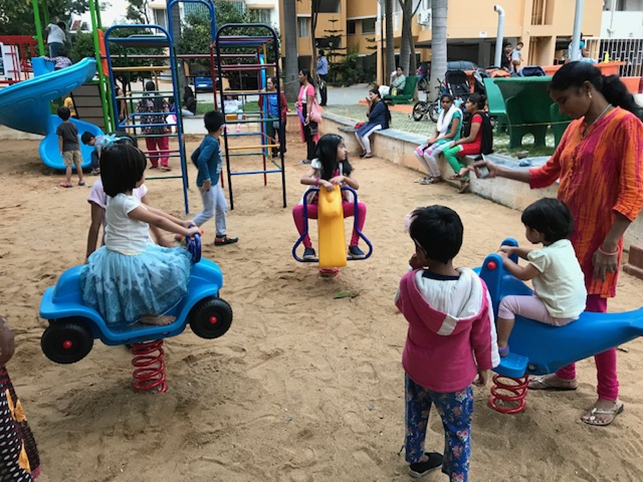
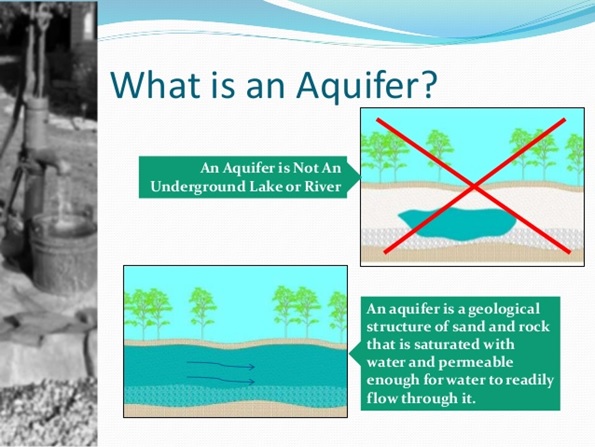
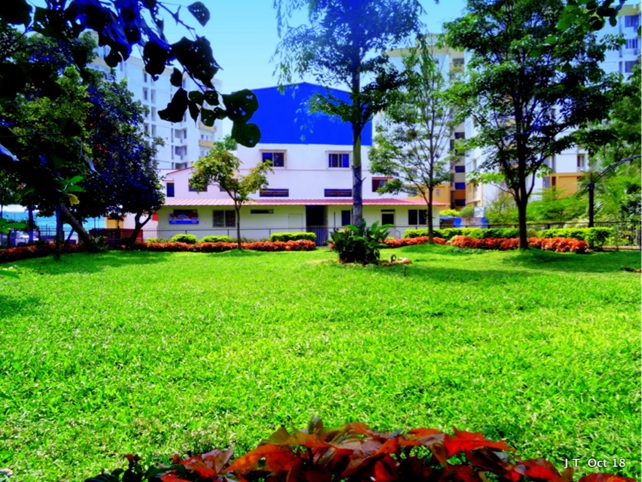
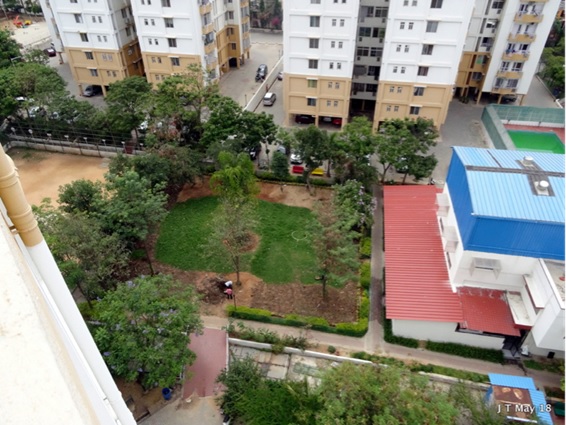

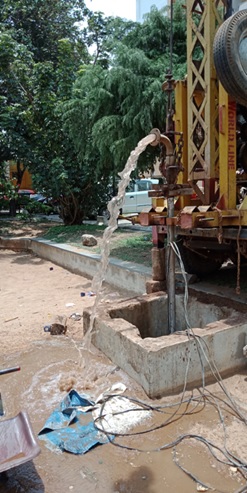
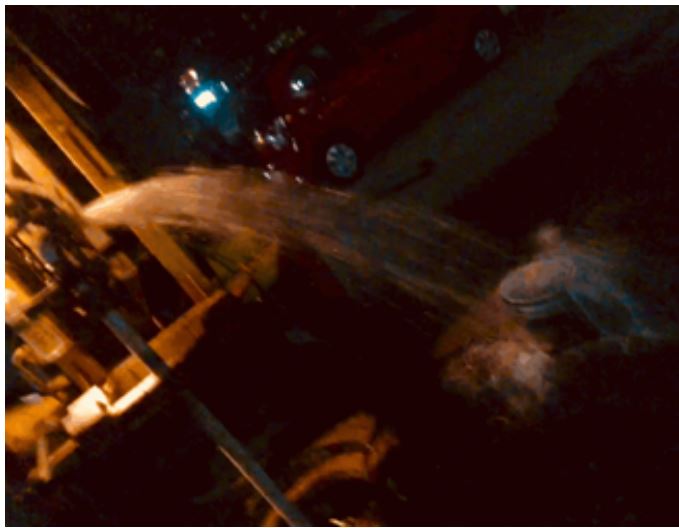
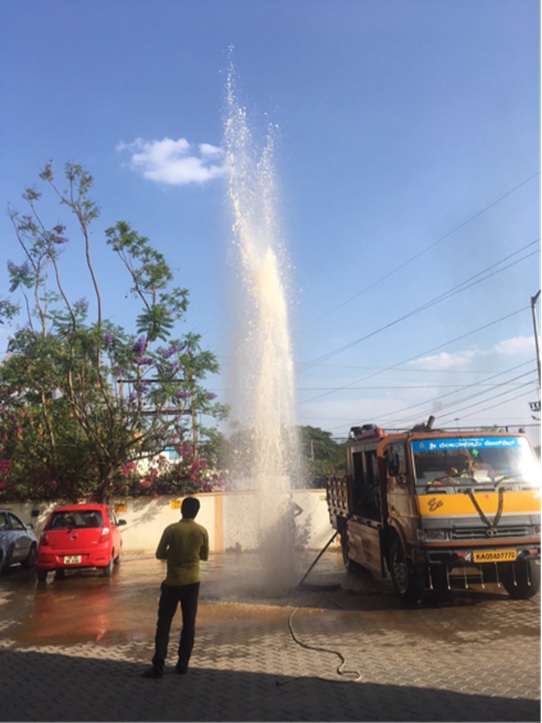




Glad to see this status update.
Wish this venture all the success.
Joe.. congratulations again for being persistent ine implementing the WH plans in your Society. Without you they would have failed.
I am sitting in NYC and overlooking the large Hudson River. I am envious of USA for their water resources. I am also impressed of the rules they implement and are followed. It is pristine clean. No one throws anything in the river. Ships ferry cargo up this River. We have never organised our water resources.
When I am back in Delhi, I will request you to send the water Diviner to Delhi for a day. I am currently facing same problems at the farm. I use Tankers from April to July till the rains come. I want to find a place at the farm where I can have a permanent well for to supply water through the year.
Your project in Kashmir and now in the Society should be inspiration to many.
Thanks Dave. Glad that you wish to avoid buying tanker water. I’ll contact you off forum and discuss details.
US also has water problems. The Mississippi – Missouri river basin extends all the way from the Canadian border up to the Gulf of Mexico. It is flood prone.
South West US is arid and much of it is desert. They are over exploiting the water resources. The largest irrigated crop in US is grass. Grass for lawns and golf courses.
The city of Los Angeles has bought up the water resources of a large part of the Californian desert. The water is taken to LA while the locals are deprived.
But enough of US problems. We have bigger problems of our own.
Never knew that about USA.
Looking forward to the interaction re cuttong out Tankers in Delhi.
Arriving back July11 and will contact you.
[...] Rain Water Harvesting at Jal Vayu Towers Bangalore by Joseph Thomas December 16, 2018 [...]
Sir, Nice to see your efforts appreciated.
Thanks for sharing.
Thanks. It is mostly appreciated outside JVT.
I’ll be spending a week in Dakshana Valley, 60 km from Pune, later this month to help them with rain water harvesting and other stuff.
Great Sir, so Pune people also get benefited, all the best.
Dakshana Valley is only 50 km from Ralegan Siddhi where Anna Hazare has transformed his village. See https://www.youtube.com/watch?v=aBfjsdICGT0
There is nothing complicated about utilising the free rain water that we get. A little effort is required, that is all.
The main thing is that grassroots effort is required. We cannot depend on the government, because the government always looks at grandiose projects.
Thanks for sharing the link to the article…it is very enlightening!
Also, as an owner it is very helpful to know some of JVT history and all the efforts put in by various residents.
Maybe, one day I can go around JVT with you and get the lay of the land as far as underground tanks are concerned…there seem to be so many!
Prabhu B.V.
Sun, Dec 30, 10:26 PM (14 hours ago)
to me
Sir,
thank you very much for the nice information & the need for rain water harvesting. Remembering your initiative in MDC before anyone thought about it.
Wishing you & your family too a Very Happy, Healthy & Prosperous New Year 2019.
Dr.BV Prabhu& Family
Prabhu,
Thanks.
Do keep us informed about the progress made by your son.
Regards for Mrs Prabhu. I am sanguine that her practice is helping the people around you. I have more faith in Ayurveda than Allopathy.
Surjit
Sir,
I must compliment Wg Cdr Thomas on the quality of the pictures. They are eminently good.
The article is well researched.
Surjit
Dear Thomas Sir,
I wish all housing societies all across the country resort to this low cost idea.It should be made compulsory for all future constructions in all places and strictly enforced.Great effort.
Thank you sir. Many states have made rain water harvesting compulsory. But implementation varies. Also, far too many projects are designed with a lot of masonry construction which is rarely required.
More than 150 years ago, our ancestors — who were mostly illiterate — undertook this all over Central Kerala. Probably other areas also. There is no complicated science involved, just a few simple measures.
Thanks for the info. Yes, rainwater harvesting has become quite popular. There are a few Indian companies that have come up with clever and efficient mechanisms for generating water from air – worth looking into
Thanks George.
Generating water from air is a byproduct of air conditioning or
refrigeration. Water is produced from air when it is cooled below its
dew point. As a standalone system it is very inefficient, thanks to
entropy and the 2nd Law of Thermodynamics. And it does not work when
humidity is very low.
Establishments like hotels and hospitals require air conditioning, hot
water and drinking water. An integrated system where the air
conditioner heats some water will be very efficient. During humid
weather, clean water is available as a by product.
Machines to produce water from air are commercially available. They
are worthwhile as stand alone systems only where cost is not a
consideration.
Thanks George,
We had a brief discussion on atmospheric water generators. I am now convinced that usage of AWGs will increase.
The AWG available in India is a straightforward refrigeration – condensation type. Website is http://watermakerindia.com/company.php
The Arizona company you referred is probably this :
https://inhabitat.com/new-rooftop-solar-hydropanels-harvest-drinking-water-and-energy-at-the-same-time/
Sunlight + Air = Water. It’s a befuddling equation, but it’s at the heart of a new solar hydropanel developed by Arizona-based startup Zero Mass Water. The company’s SOURCE panels can be installed atop any building just like standard photovoltaics, but instead of just harvesting solar energy, they use the sun’s rays to pull water from the air. Each panel has the potential to draw up to 10 liters (2.64 gallons) of water per day.
So how does it work? Each SOURCE array consists of a standard solar panel flanked by two hydropanels. As explained by The Verge in the video above, the photovoltaic at the center of the array drives a fan and the system’s communication with the hydropanels. The hydropanels themselves consist of two different proprietary materials, one that can generate heat, and another that can absorb moisture from the air. Together they are able to condense water into an onboard, 30-liter reservoir where it is mineralized with calcium and magnesium. From there, the water can be siphoned directly to a drinking tap.
As one might guess, the amount of humidity in the atmosphere and solar energy available will affect the payout. However, Zero Mass Water says that even low-humidity and arid regions can effectively benefit. The company’s CEO, Cody Friesen, cited the array atop his headquarters as an example. “Our array on the Zero Mass Water headquarters in Scottsdale, Arizona makes water year-long despite low relative humidity. The Phoenix-Metro area can get below 5% relative humidity in the summer, and SOURCE still produces water in these incredibly dry conditions,” he said. Additional panels can also be added to optimize water collection, but there is the matter of cost.
Right now, the two-panel array costs $4000, plus installation, which runs $500. The whole system has been engineered to last 10 years, which according to Treehugger’s calculations, this averages out to about $1.23 per day, or between $0.12 and $0.30 per liter of H2O.
To date, hundreds of panels have been set up in eight countries around the globe. Zero MassWater says the installations represent a combination of early adopters who have paid out of pocket for the technology and developing areas and emergency situations where funding has been provided by donors, NGOs, or other institutions.
Joseph,
Feel proud and elated with your vision & proactive achievements. .
I feel blessed to have known you since your youth.
Love you
soorkhan
Thanks sir. Am privileged and blessed to have seniors like you.
A great initiative , conceptualised and executed with conviction for social good . The ” way to go ” for all housing societies. In a place like Bangalore , with many bad examples of pollution – Bellandur lake for example – this regenerative process has a special meaning.My congrats to the team who made this possible.
We have many such initiatives at Secunderabad but not at such scale.!
Thanks sir. I was in the Advisory Committee when our project was under construction. The architect and the builders were always anxious to provide for adequate drainage of rainwater and send it outside. I believe it is drilled into them in engineering college. Makes sense in areas of high rainfall like Assam. But, where water is scarce, the first choice should be to utilise the rain water, or at least soak it into the ground.
Makes sense. Such commitment from all stakeholders is essential for the success of the venture.
Once I discussed with a MUNICIPAL GUY/politician …Why don’t you make a slip road at PRAGATI MAIDAAN NEW DELHI, to avoid long queues and road blocks and traffic jams to ease congestion
he said
Sir
we know what to do when
let there be a ”crisis”
we will then act.
Well if that be as it may
you have now come to a WATER crisis
Hope someone will listen to you.
But now I stay in Canada …since last 15 years
AND there is no shortage of
water— electricity or paper
yet all wash off with toilet paper
AND PRAISE LOWER POPULATION
Start with it till pollution sets in —in south cut trees
in in the mean time
make ponds and cemented water tanks
to arrest RAIN WATER CENTRALLY
and CANALS and water streams
arrest the small Qtys of rain water in small quantities in BLRU.. so it seems
Just make a beginning
Teach younger kids in schools and newly married young mom’s education
and in hospitals etc to use TOILET PAPER AND IN HOTELS TISSUE..
You can even IMPORT it ….
Oldies may abhor TOILET PAPER .excuse them
TRY AND PHASE OUT THE CRISIS
REDUCE POPULATION IN BLRU PLEASE.
Thank you sir. Instead of reducing the population in Bangalore, the government keeps on sanctioning new projects. The Bangalore water authority does not provide water for construction. So the builder digs a borewell. In many cases, there is no water even 1500 feet below the surface. In such cases, small projects are built using tanker water. Many large projects have to be abandoned. Yet, more and more buildings are constructed.
Many residential areas are permanently dependent on tanker water. Such water is dirty and expensive. Rain water is the purest water available in nature. Yet, city-bred people are reluctant to drink it.
Yes I know
water was scarce when I was in BLR in 1982 to 1985
when KORAMANGALAM… If I recall correctly
was being constructed
then too there was no water
I wondered……
Glad you have applied your mind
and rain water will be suitably refined
ASK them to buy bottled drinking water
My family here does often
even though I have an installed filtering system
local water has more sand
All the best
my bro in Upper Palace Orchards had also made a water tank
to lift up water —first floor
now you must be having at least 14 to 17 floors!!!!!
Kindness for such an instant reply
ALL THE BEST
Thanks again sir. Yes, there’s a huge business in bottled water. Some of it is good. Some bottled water is merely tap water. It’s better to have a Reverse Osmosis (RO) gadget at home. I’ve been using one for the past 15 years.
A 20 liter jar of bottled water costs Rs 40 or Rs 2000 per kiloliter. Smaller sizes (5, 2 and 1 liter) are much costlier. People happily pay Rs 2000 / KL for bottled water but complain bitterly about paying Rs 30 / KL for piped water. That piped water costs almost Rs 100 to produce, purify and transport. So there is a major subsidy involved. The subsidy encourages people to waste water.
In 1976 I became a civilian. I met a couple at the club who had returned from USA. The husband Kanwarjit had done post graduation in Water Management from Stanford University USA. I was wondering where will this lead him to?
After having many meetings with the Government he decided to chuck up the idea of managing water and joined his father’s large construction company. A well trained mind went to waste.
We have always taken water for granted and never paid any attention to saving water. On the other hand you go to Rajajsthan Havelis and they have planned water management in each Haveli. Roofs of the Haveli are pristine white and clean. Just before monsoon the roofs and basements are cleaned by crew. All the water goes straight to basement and is used for the house for next six months.
We have to educate every village and create their ponds once again to fight this battle of water.
I am happy for Joe to have applied his knowledge in the betterment of society. We have all the knowledge but Government fails us every time.
Thanks Dave. I don’t blame the government. Most states have made it compulsory. It is the public that needs to be aware. One reason is that we continue to subsidise water for everyone. It should be subsidised only for the poor. When the subsidy is removed, people will be more aware.
The second problem is the supply of free power to farmers. Many of them keep their water pump switches on all the time and extract all the ground water that they can. If they utilise the rain water that falls on their farm, it will be better for everyone.